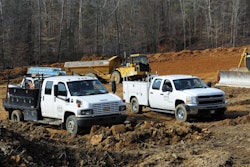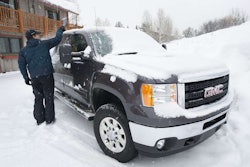AUTOGAS: PROPANE AS AN ENGINE FUEL 
Understanding the economic savings that come from switching to propane autogas
Courtesy of Roush CLeanTech
Propane autogas, the term for propane when fueling an on-road vehicle, has the attention of fleet and transportation managers for a few reasons: economics, energy security, and the environment.
It is a safe, sustainable, and domestically produced fuel with a robust infrastructure and economic efficiencies.
As an approved clean alternative fuel under the Clean Air Act of 1990, propane autogas qualifies as an alternative fuel eligible for various federal tax incentives and programs.
Currently propane autogas powers more than 270,000 propane autogas vehicles in the U.S., including fleets, school buses, shuttle buses, trucks, vans, and taxis.
More than 15 million vehicles run on propane autogas worldwide.
Countries such as South Korea, Poland, Indian, and Japan have a significant percent of their transportation vehicles running on propane autogas. About 40 percent of vehicles in Turkey are fueled by propane autogas.
There are two different ways vehicles may be powered by propane autogas — dedicated and dual-fuel:
- Dedicated vehicles, fueled only by propane autogas, can be converted from gasoline powered vehicles or can be delivered direct from select original equipment manufacturers.
- Dual-fuel vehicles, installed by certified technicians, can run on either propane autogas or gasoline.
Propane autogas vehicles operate in a similar way as gasoline fueled vehicles. Only a few modifications to the vehicle must be made. The system can be a vapor or a liquid fuel injection.
In a vapor injection, propane is vaporized and mixed with combustion air in the intake plenum (enclosed chamber) of the engine. Traditionally, vapor systems are less expensive but result in a loss of power.
In a liquid system, liquid propane autogas is injected directly into each cylinder’s intake port. The liquid fuel vaporizes in the cylinder, cooling the air and resulting in no loss of horsepower, torque, or engine performance.
Propane autogas vehicles have the longest driving range of any alternative fuel — more than 250 percent farther than compressed natural gas, about 60 percent farther than methanol, and 25 percent farther than ethanol.
This is due to a number of reasons, including the fact that propane autogas requires a smaller storage vessel than other pressurized alternative fuels to go the same distance.
 Propane autogas vehicles meet the same standards for safety as conventionally fueled vehicles.
Propane autogas vehicles meet the same standards for safety as conventionally fueled vehicles.
Propane autogas vehicle tanks are constructed from carbon steel under code developed by the American Society of Mechanical Engineers (ASME4196), are 20 times more puncture resistant, and can withstand far more pressure than typical gasoline, methanol or ethanol tanks.
ROUSH CleanTech propane autogas fuel tanks are designed to hold a capacity that maximizes the number of miles driven between fill ups.
Propane autogas offers more energy per unit mass and has a higher octane rating than gasoline.
Propane as an auto fuel does have a slightly lower fuel economy, due to the lower British thermal unit (Btu) content of propane as compared to gasoline — it takes more fuel to create the same amount of power.
(Click here to use the ROUSH Cost Savings Calculator.)
Many propane autogas vehicle fleets have reported two to three years longer service life and extended intervals between required maintenance when compared to their gasoline vehicles.
The cleaner burning nature of propane and the lack of carbon build up in the engines leads to this unique benefit of propane autogas.
ROUSH CleanTech customer testimonials prove the on-road performance of propane autogas matches research documented in trials, including the same horsepower, torque, and towing capacity as gasoline-fueled vehicles.
Ease of refueling a propane autogas vehicle has helped grow the use of this alternative fuel. With thousands of refueling stations across the U.S., a robust national infrastructure is in place to support its implementation as a primary fuel.
In addition, some fleets choose to work with their local propane marketer to establish a propane autogas refueling infrastructure on-site at little or no cost.








